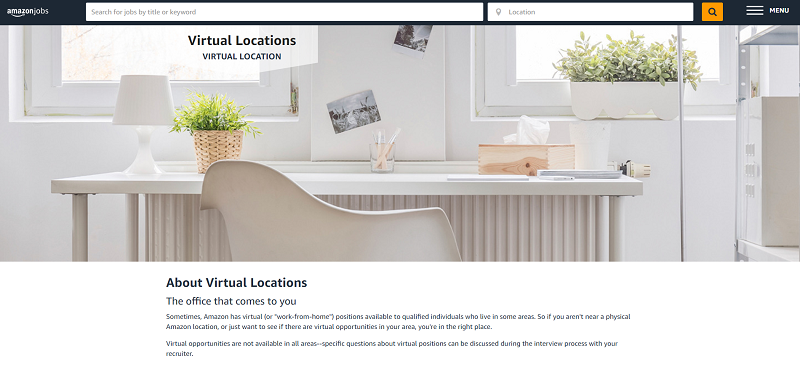- What’s the Difference Between a Job Description, Job Posting, and Job Ad - June 5, 2025
- Top 20+ Diversity Equity Inclusion Titles (with Descriptions) 2024 - October 18, 2024
- A List of Common Offensive (Exclusionary) Words Used in Job Descriptions (2024) - October 18, 2024
If you’re like just about every other talent acquisition/diversity leader I know, recruiting more women is one of your top diversity goals. Women have a lot to offer in the workplace, and workplaces with better gender diversity are 15% more likely to earn revenue above the average for their industry.
Hiring and retaining women can be a real financial advantage, and it’s worth investing in! But if you don’t have extra money to spend on gender equality hiring initiatives right now, here are some free tips for recruiting more female candidates.
1) Limit your must-have requirements for recruiting more women
One Hewlett Packard study showed that men apply for a job if they meet 60% of the qualifications, but women only apply if they meet 100% of them. Why? According to a related survey from Harvard Business Review, women were far more likely than men to say they declined to apply for a job because they don’t meet the guidelines in a job description.
That’s an important revelation. Women are more selective than men about applying to jobs where they may not meet every single “required” qualification.
So, one tip to recruit more women is to limit your must-have requirements in your job descriptions.
It’s ok to still include some other nice-to-have requirements but you should separate them into another category. You could have a completely separate “Nice-to-Have Requirements section in your JDs. Or, you can do what Hubspot did – softening the words they use for any requirements that are not must-haves. Here are examples of the language they used:
- “familiarity with..”
- “bonus points for”
- “working knowledge of…”
- “comfortable with…”
- “if you have any combination of these skills…”
The more relaxed tone of these phrases signals to the candidate that not meeting every single requirement for a job is okay. Little signs of support like this encourage more women to apply.
2) Use more “feminine-coded” words for recruiting more women
According to a study published in the Journal of Personality and Social Psychology, you can recruit women more easily if you use what they call “feminine-coded” words. Examples of feminine-coded words, according to the study, are:
- Connect
- Considerate
- Depend
- Honest
- Loyal
- Modesty
- Support
- Together
- Understand
- Yield
There are software platforms such as Readable and Ongig that help you find and add these words.
3) Offer work-from-home flexibility
Do you have any work-at-home (WFH) jobs? Recruiting women (and men) is easier if you do.
Parents who work from home save an average of an hour per day by not commuting— time they spend on caring for children and housework. Remote and flexible work schedules reduce the opportunity costs women must contend with when they decide to have children.
So, here are couple of tips to recruit women through WFH policies:
- Mention “Work-From-Home” or “remote work” as a category on your company career site (right next to your other locations)
- Make it clear in your job descriptions that you’re open to employees in different geographic locations, or who prefer to only work remotely
- If you do offer flexible or asynchronous work, as many remote employers do, mention this in your job descriptions as well. Some analysts believe that flexible work is even more important to gender equality in the workplace than remote work. 38% of mothers with young children say that without flexible work, they would have needed to scale back their hours or quit their job.

4) Emphasize your parental leave benefits in your job descriptions
In the United States, paid parental leave is not guaranteed by law. New parents are entitled to up to twelve weeks of unpaid leave per the Family and Medical Leave Act. Unfortunately, the lack of guaranteed paid parental leave contributes to gender inequality in the workplace. Many families can’t afford to take unpaid leave to care for newborns or newly adopted children. Combined with the absence of a robust, affordable childcare system, many women opt out of returning to the workplace entirely to take care of children full-time.
When you emphasize your parental leave policies in job descriptions, it shows that you take the concerns of working parents (and especially working moms, who face serious career challenges) seriously. And it also helps you in your ambition of recruiting more women.
5) Leverage media showing that you’re supportive of women
Recruiting more women is more effective with visuals.
Use photos of diverse women in corporate positions to promote your careers site. These pictures subtly communicate that your organization respects and appreciates women with leadership goals.
You can also use visuals by sharing infographics with transparent information about pay equality and gender equality initiatives at your company. Public accountability boosts credibility.
Whatever your female diversity goals and objectives are, the right visuals can help.

6) Welcome women returning to work after a break
We’ve already discussed how corporate and government policies make it difficult to be a working mother. For many of those reasons, new moms often decide to take a break from working to raise their child or children. This may lead to anywhere from one year to fifteen years (or more) out of the traditional workforce, doing the unpaid labor of raising children and running a household.
Women who leave the traditional workforce to care for children (or, alternatively, to care for aging parents) often want to transition back to full-time work eventually. But, they may find it difficult or impossible to re-enter the workforce due to the stigma around having a gap on one’s resume.
You can support women, and easily start recruiting more women, by hiring moms who are returning to work after a period of absence. These women may be ready to jump right in on one of your open positions, or they may require re-training or upskilling to get back into the swing of things. But the cost of providing that space is small compared to the benefits of hiring talented, hardworking women. They are one of the quiet, untapped groups that can be a critical advantage to companies looking to hire.
7) Address Pay Equity for Recruiting More Women
Ensuring equal pay for equal work is crucial for recruiting more women. So, when companies address the gender pay gap, they show a commitment to gender equity. Female workers want to know they are valued just as much as their male counterparts. Therefore, highlighting equal pay in job postings and during the hiring process can draw in talented women and increase the number of women in the applicant pool. It also helps reduce gender discrimination and promotes equal opportunities for all staff members.
Moreover, companies that offer fair pay see positive effects on job satisfaction and employee retention. So, by providing equal pay, businesses can build a strong employer brand and create an inclusive culture. This approach not only attracts top talent. But, it also ensures that women candidates feel confident in pursuing leadership positions and executive roles.
Recruiting More Women: The Importance of Gender Diversity
Diverse Perspectives
Having gender diversity in your workforce brings together different perspectives. Therefore, when male and female employees collaborate, they share unique ideas and viewpoints. This helps in solving problems creatively and making better decisions.
Improved Company Culture
A diverse workforce contributes to a better company culture. When job postings attract female talent, it shows a commitment to inclusivity. So, this creates a positive environment where all staff members feel valued and respected.
Better Financial Performance
Studies have shown that companies with more women in leadership positions tend to perform better financially. This is because diverse teams are also more innovative and can connect with a broader customer base. So, by including more women in leadership roles, companies can see positive effects on their bottom line.
Addressing the Gender Gap
Hiring more female workers helps close the gender gap. As a result, when the number of women in the workforce increases, it leads to greater gender equity. This is not just good for women but also for the entire business as it promotes fair pay and equal opportunities.
Enhancing the Talent Pool
Expanding your recruitment process to target female applicants widens the talent pool. So, use social media and job boards to reach out to talented women to attract top talent. This also makes it easier to find qualified women who are a good fit for your company.
Creating Inclusive Workplaces
Flexible work options and childcare support help create a safe space for female employees. These benefits improve work-life balance and job satisfaction. So, when companies offer maternity leave and fair pay, they show they care about their female workers.
Reducing Unconscious Bias
It’s important to address unconscious bias in the hiring process. So, train hiring managers to recognize and reduce bias to ensure a fair interview process. This helps in selecting the best talent, regardless of gender. And it also promotes a more inclusive culture.
Boosting Company Culture
Promoting women leaders enhances the company’s culture. It shows that the company values leadership teams with diverse candidates. This also encourages female employees to aim for executive positions and management roles, knowing they have equal opportunities for career development.
Attracting Potential Candidates
Using job ads that highlight gender diversity can attract more potential candidates. When potential applicants see that a company values gender parity, they are more likely to apply. This boosts the number of women in the applicant pool and leads to a more diverse workforce.
Long Term Success
Focusing on gender diversity is an effective strategy for long-term success. It shows a commitment to gender equity and helps in building an employer brand that attracts and retains the best talent. So, by prioritizing gender diversity, companies can achieve greater diversity and long-term financial performance.
Incorporating gender diversity into hiring practices is not just about filling an open position. It’s also about creating an inclusive culture that values every employee’s contribution. Thus, leading to a thriving and successful business.
Why I wrote this:
Recruiting women is a top benefit of our Ongig job description marketing platform. So I study this topic closely. Ongig lets you drag and drop any media to any job page and also analyzes words for masculine/feminine bias. Ongig also automatically creates microsite landing pages for diversity and work at home jobs. If recruiting women is your priority, please request a demo of Ongig’s Text Analyzer.
